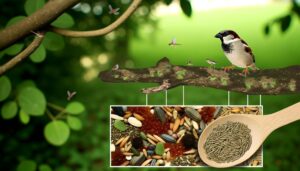How Fast Does a Sparrow Fly?
House Sparrows typically fly at speeds ranging from 20 to 30 miles per hour, as determined by radar tracking and high-speed video analysis. Their flight speed can vary depending on whether they are engaging in short bursts or sustained flights.
Wing structure, wingbeats, and overall physical health greatly influence their agility and speed. Environmental conditions and energy levels from their diet also play vital roles in their flight performance.
To understand this small bird's remarkable flying capabilities and the intricate factors affecting them, explore further details beyond just their average speed.
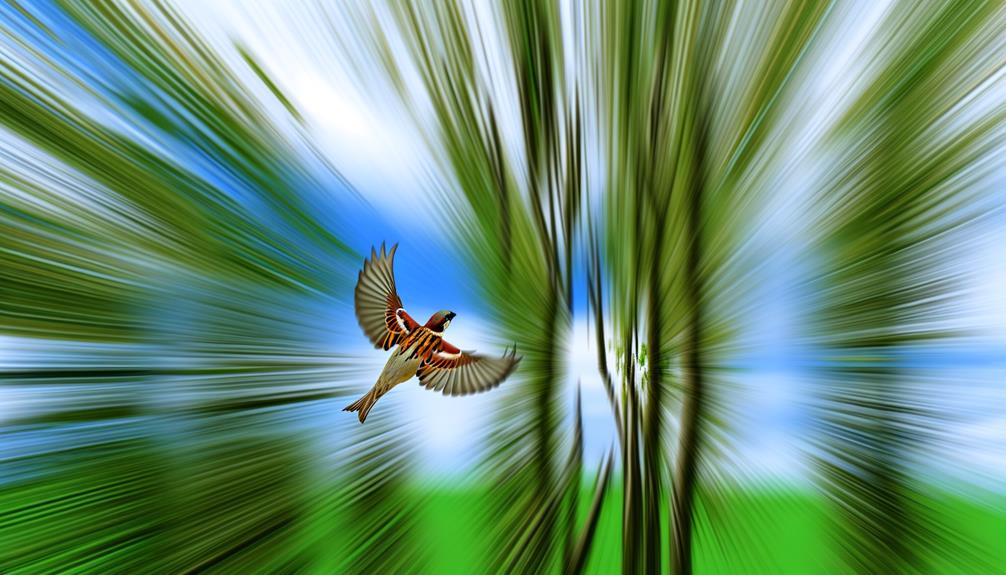
Key Takeaways
- House Sparrows fly at speeds ranging from 20 to 30 miles per hour.
- Flight speed is determined using radar tracking and high-speed video analysis.
- Speed varies between short bursts and sustained flights.
- Wing structure and wingbeats enhance agility and flight performance.
- Environmental conditions and physical health significantly influence flight speed.
Sparrow Flight Speed
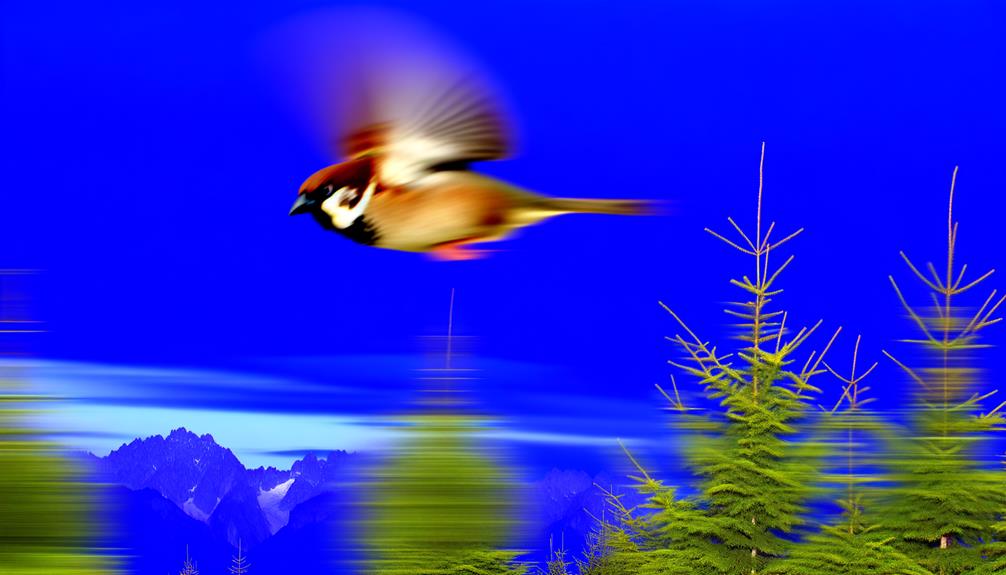
The flight speed of sparrows, specifically the House Sparrow (Passer domesticus), has been documented to average between 20 to 30 miles per hour. This range has been established through various observational studies and technological methods such as radar tracking and high-speed video analysis.
These methods allow for precise measurement of their velocity in different flight conditions. Importantly, sparrow flight speed can vary slightly depending on whether they are engaging in short bursts to evade predators or longer, sustained flights during migration.
The aerodynamic efficiency of their wing structure, combined with rapid wingbeats, enables them to maintain these speeds with remarkable agility. Understanding these speeds provides insight into their behavioral ecology and adaptive strategies in diverse environments.
Factors Influencing Speed
Several factors contribute to the variation in sparrow flight speed. Environmental conditions such as wind speed, temperature, and humidity influence aerodynamic efficiency and consequently the bird's speed. Physical health, encompassing muscle strength, wing shape, and feather condition, directly affects a sparrow's ability to generate lift and thrust. Energy availability, determined by diet and metabolic reserves, regulates the bird's stamina and capacity for sustained flight.
Additionally, behavioral factors like predator evasion and foraging strategies can necessitate bursts of speed or prolonged flight. Each of these elements interacts dynamically, creating a complex matrix that dictates the ultimate flight performance of sparrows in various contexts.
Sparrow Vs. Other Birds
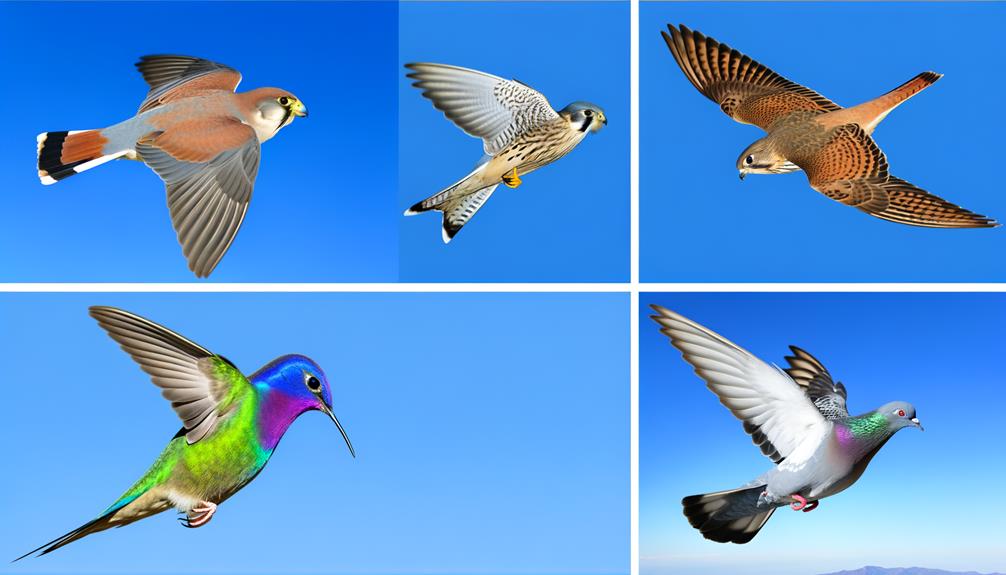
Understanding the factors that influence sparrow flight speed provides a foundation for comparing their flight capabilities to those of other bird species. Sparrows generally achieve speeds of 20 to 30 miles per hour.
In contrast, peregrine falcons, the fastest birds, can reach diving speeds of over 200 miles per hour. Swifts, known for their agility, regularly sustain speeds of 70 miles per hour during level flight. Hummingbirds, although not as fast, exhibit remarkable hovering abilities and can achieve bursts of 30 miles per hour.
These comparisons highlight the diversity in avian flight adaptations, where each species has evolved specific traits ideally suited to their ecological niches, from rapid dives to sustained high-speed flight and precise hovering.
Flight Mechanics
Examining the flight mechanics of sparrows requires an in-depth analysis of their wing structure, muscle physiology, and aerodynamic principles. The sparrow's wings are short and rounded, facilitating quick takeoffs and agile maneuvers. The wing's primary feathers provide thrust, while the secondary feathers offer lift.
Muscularly, sparrows possess robust pectoral muscles, enabling rapid flapping necessary for sustained flight. Aerodynamically, their wing shape minimizes drag and maximizes lift through precise control of angle of attack. The lightweight skeletal structure also contributes to efficient energy use during flight.
Understanding these elements provides insight into how sparrows achieve speeds of 24 to 32 mph, showcasing the intricate interplay of biology and physics in avian flight dynamics.
Observing Sparrow Flight
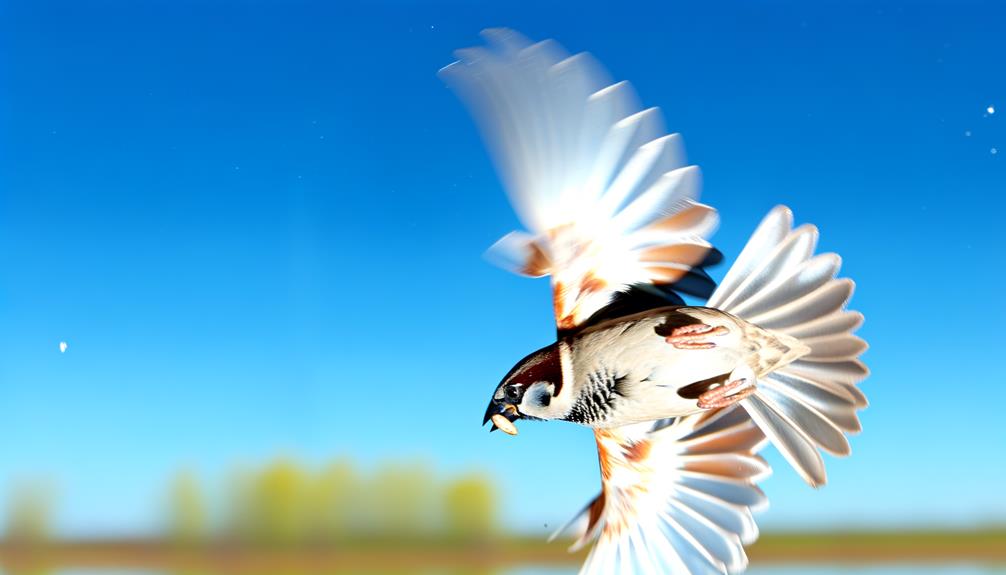
By closely monitoring sparrow flight in their natural habitats, researchers can gain valuable empirical data on their speed, maneuverability, and overall flight patterns. Advanced technologies such as high-speed cameras and GPS tracking devices are employed to capture minute details of their flight dynamics. Data collected include flight velocities, turning radii, and flapping frequencies, which are then analyzed to understand their aerodynamic efficiency.
Field observations are complemented by controlled experiments in wind tunnels, allowing for precise measurement of air resistance and lift forces. These thorough studies enable ornithologists to build accurate models of sparrow flight behavior, contributing to broader ecological insights and conservation strategies. This detailed approach ensures a strong understanding of the sparrow's flight capabilities and adaptations.
Conclusion
To sum up, sparrows typically achieve flight speeds of 24 to 28 miles per hour. One remarkable statistic is that during rapid escape maneuvers, their speed can momentarily surge, showcasing impressive agility. Factors such as wind conditions, predator presence, and physiological health notably influence these speeds.
Compared to larger birds, sparrows exhibit superior maneuverability due to their compact size and wing structure. Understanding the mechanics of sparrow flight highlights the intricate interplay of anatomy and environmental factors driving avian locomotion.






